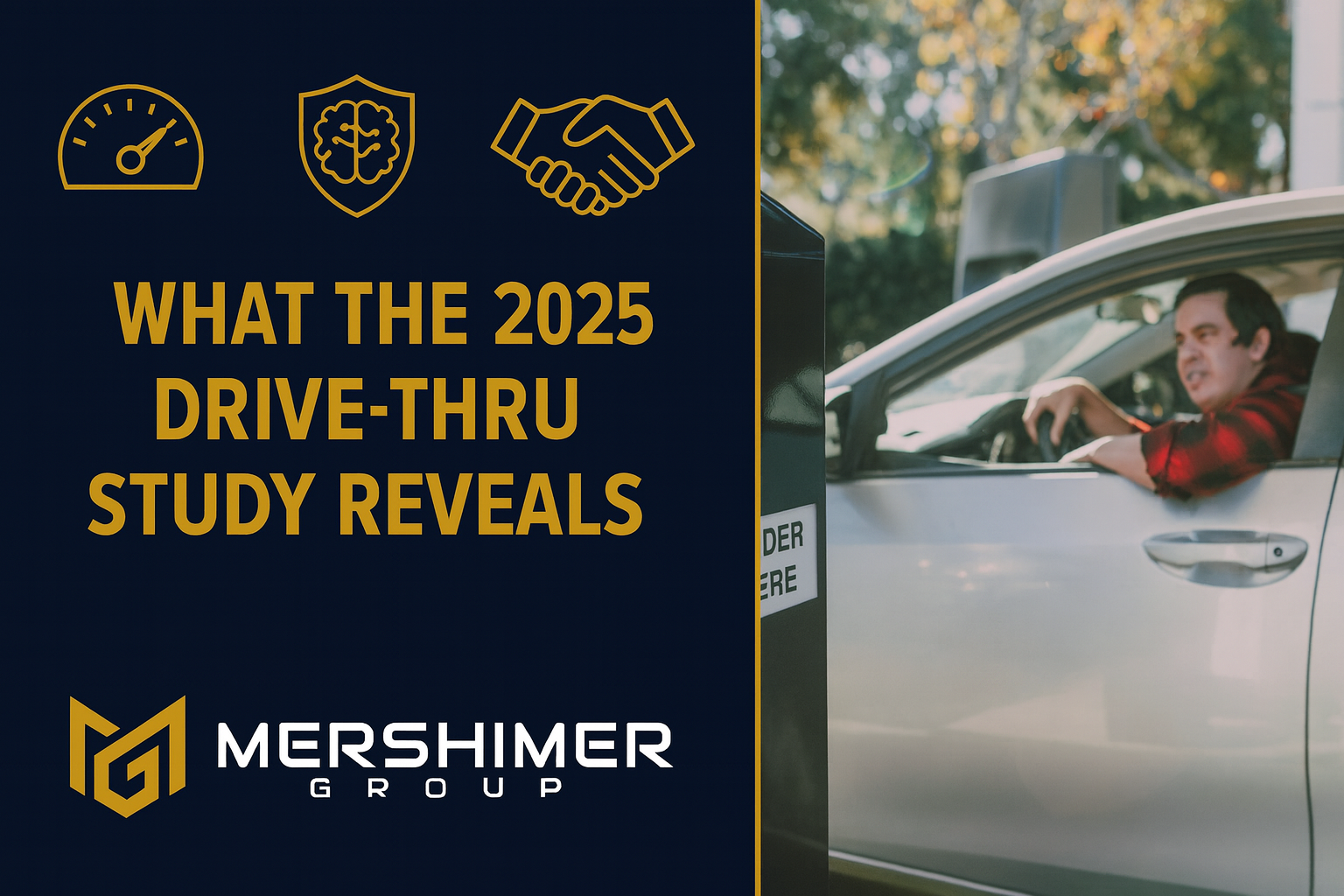Insights from the 25th Annual Drive-Thru Study by Intouch Insight
The modern drive-thru has evolved into more than just a convenience—it’s now a customer experience battleground. With rising consumer expectations and the growing influence of AI-driven automation, the 2025 Drive-Thru Study from Intouch Insight delivers a clear message: brands that balance speed, friendliness, and accuracy will win customer loyalty.
This year’s study, marking its 25th anniversary, evaluated 13 leading QSR brands across more than 1,500 mystery shops. It also added a fresh layer of insight: a breakdown of Voice AI performance vs. traditional human ordering.
Here are the key takeaways every operator should know.
Speed of Service: Still a Core Priority
While overall drive-thru times remain slower than pre-pandemic benchmarks, wait times actually improved compared to 2024, especially for brands that delivered clear communication and minimal repetition during ordering.
- Speaker clarity led to 54 seconds faster service
- Customers who didn’t repeat orders were out 1 minute and 25 seconds faster
- Total average time across all brands: 5 minutes, 35 seconds
Brands like Taco Bell, Tim Hortons, and Arby’s led in overall speed, while some popular names lagged with longer lines and slower handoff times.
What it means: Optimizing queue flow, staffing around daypart surges, and improving communication clarity can shave critical seconds off drive-thru operations.
Order Accuracy: Getting It Right Still Matters
While the industry held steady at an 87% accuracy rate, certain brands, especially those in the Chicken segment, scored significantly lower.
Top mistakes included:
- Incorrect ice modifications (51% of errors)
- Wrong item delivered (25%)
Interestingly, the Afternoon daypart had the highest accuracy (90%), while Dinner trailed at just 86%.
What it means: Late-shift performance monitoring and better training around customization are critical to protecting brand trust.
AI Ordering Is Faster But Not Friendlier
Voice-AI ordering is no longer a novelty; it’s being tested and deployed in real-world drive-thru environments. This year’s study included 120 AI-enabled visits across three brands.
Here’s what the data showed:
|
Metric |
AI Locations |
Human-Driven |
|
Service Time |
3:53 |
4:15 |
|
Order Accuracy |
83% |
87% |
|
Overall Satisfaction |
97% |
91% |
|
Friendliness |
72% |
78% |
So, while AI was faster and scored higher on satisfaction, it lagged in friendliness and struggled with complex or customized orders.
What it means: Customers appreciate speed, but human fallback is still essential for handling special requests and maintaining brand warmth.
Friendliness Is the X-Factor
One of the most powerful findings in the study: when service was rated as friendly, overall satisfaction jumped to 97%. Without it? Satisfaction dropped to just 22%.
Even more surprising: friendly service also improved order accuracy and service time.
|
Friendliness Level |
Satisfaction |
Order Accuracy |
Avg. Total Time |
|
Friendly |
97% |
89% |
5:23 |
|
Not Friendly |
22% |
70% |
6:57 |
What it means: Friendliness isn’t fluff, it’s a measurable KPI. Reinforce soft skills like smiling, tone, and helpfulness in training and evaluations.
Segment Snapshot: Classic vs. Chicken vs. Beverage
- Classic Brands (McDonald’s, Wendy’s, Taco Bell): Fastest total time (5:09) but weakest in friendliness.
- Chicken Brands (Chick-fil-A, KFC, Popeyes): Best in satisfaction and friendliness, but slowest overall.
- Beverage Brands (Starbucks, Dunkin’, Dutch Bros): Strongest in order accuracy and second-fastest in service.
Operators should benchmark against their peer category, not just the overall study average, to set realistic goals.
Operator Recommendations
From Mershimer Group’s perspective, working with franchise and QSR brands nationwide, these findings reinforce what our audits often uncover:
1. Train Friendliness as a Performance Metric
Your speed and accuracy won’t save a poor guest interaction. Friendliness must be taught, modeled, and measured.
2. Balance AI with Human Support
AI offers clear efficiency gains but is not a plug-and-play solution. Ensure team members can step in when AI falls short.
3. Don’t Let Dinner Drag You Down
Late shifts show lower accuracy and speed. Monitor shift performance and consider targeted coaching or shift-specific KPIs.
4. Use Mystery Shopping to Uncover Execution Gaps
There’s a difference between a checklist and a real experience. Mystery shopping (especially with AI/Voice-AI splits) can reveal where execution drops off.
Final Take
The drive-thru is no longer just about moving cars. It’s a branded interaction, a loyalty moment, and a competitive differentiator.
Speed still matters. But friendliness and execution consistency are what keep people coming back.
To see how your drive-thru (or front-line operations) compare or to implement Voice-AI evaluation alongside traditional mystery shopping, reach out to the team at Mershimer Group.

